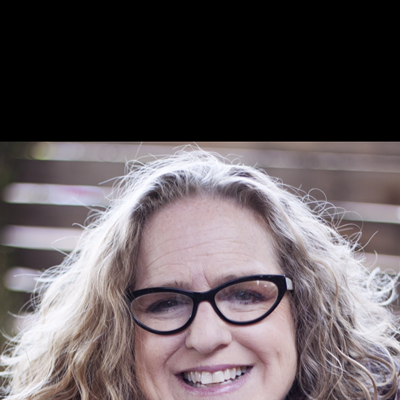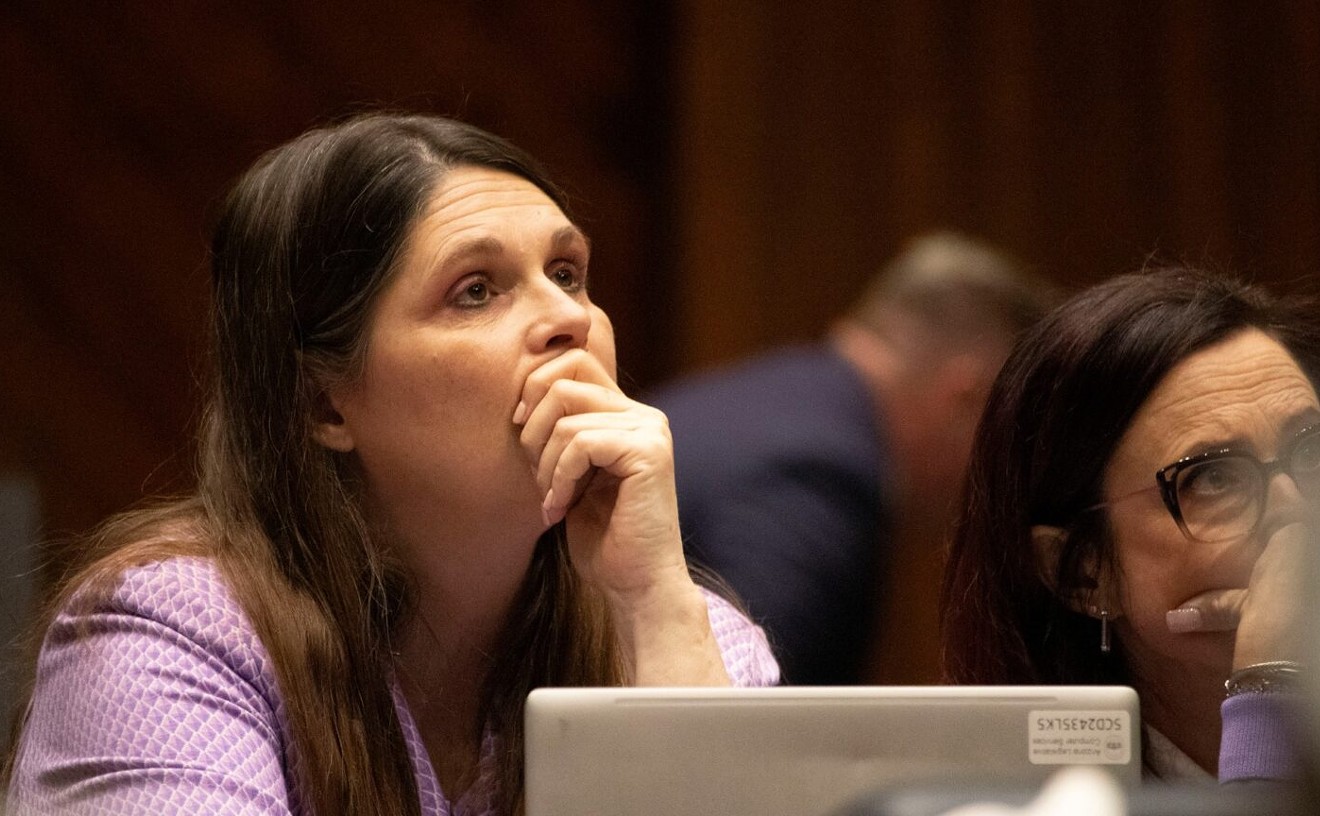The Gingrich-ite made headlines for overnighting in his office and picking fights with seasoned House members like Maryland's Steny Hoyer and Wisconsin's Dave Obey. The Progressive called him one of the 10 "Dimmest Bulbs" in Congress and the Washington pundits declared his one of the most vulnerable Congressional seats in the country in 1996. The national Democratic party and labor unions lobbed gobs of cash to his opponent, attorney Steve Owens.
And then something wacky happened. Hayworth won--by the slightest of margins, 2,500 votes, a mere percentage point--but he won.
Within days, Owens announced his candidacy for the next go-round, the race to be decided this November 3. No one has paid much attention this time, deeming this year's race a boring rerun. But this is no rerun. Steve Owens may be running the same race he ran two years ago--right down to his mantra: "Hi, I'm Steve Owens; my father was a truck driver; my mother worked at Sears"--but this year, what's changed is his opponent. Owens is running against a different J.D. Hayworth. The blustering, hot-air balloon caricature now has actually inflated himself with some substance, or at least the appearance of substance.
Don't get me wrong. We're talking in relative terms here--Hayworth remains a formidable embarrassment. The folks in D.C. still giggle at his booming sermons; on days when Congress is in session, you're likely to catch him on CSPAN, raving to an empty chamber, as usual. And this summer, Washingtonian put him at the top of the magazine's "No Rocket Scientist" category.
Nonetheless, the new and improved J.D. Hayworth has landed. He doesn't lose his temper or sleep on his couch. He no longer takes to the House floor with lousy imitations of Letterman "Top 10" lists. In the past two years, he's amassed impressive power in Washington and used his office budget to churn out the Hayworth gospel among the people of Arizona's sixth congressional district, which stretches from east Mesa north to the Navajo Reservation.
And on the campaign trail, Hayworth has toned down the bombast, stepped up the fund raising and taken the lead on discussions of issues like nuclear waste disposal, putting Owens on the defensive. Hayworth also gets credit for bothering to show up at face-offs against his opponent, unlike other Republican incumbents like Governor Jane Hull and U.S. Senator John McCain.
In the face of the reinvented Hayworth dirigible, Owens is just a kid with a peashooter, a kid Hayworth can expect to trounce handily on election day.
And when he wins, the first person J.D. Hayworth should thank is Steve Owens.
In this country, where 95 percent of incumbents get returned to office, most members of Congress can afford to blend into the background or just be their goofy selves. Not J.D. Hayworth. Steve Owens has been on his tail since the day the Republican was elected to office. One unlikely result of Owens' efforts is that Hayworth has been forced to be a more attractive candidate.
Two years ago, the stars were aligned to elect a Democrat in the sixth congressional district. The seat, which had only existed since 1992, first belonged to Democrat Karan English. English lost to Hayworth in 1994's Contract With America sweep. The irony is that Bill Clinton was the first Democrat to win in Arizona since Harry Truman, but the same year, Steve Owens couldn't snatch a seat in a district where voter registration is almost evenly split between Democrats and Republicans.
This is a much tougher year for Democrats, and an especially dicey one for an Owens candidacy. Midterm elections are historically rough on a president's party, and no one knows how the Monica Factor will play out electorally. Owens, who has always relied heavily on his longtime friendship with Al Gore as a qualification for a Congressional seat, could suffer more than any other Arizona candidate as a result.
But the worst damage to Owens emerges from the fact that Hayworth has done just about everything right. He had to, to save his own butt, which Owens very nearly kicked during the last election.
Hayworth began his makeover by scraping his way onto the House Ways and Means Committee, becoming the first Arizona congressman ever to do so. This past spring, he reached out to constituents via glossy mailings financed by his Congressional office budget. He stopped taking donations from tobacco interests, but still managed to amass an impressive war chest; he's spent more than $1 million on his campaign, to date. On the campaign trail, he's become less combative but still assertive. And while not a rocket scientist, he's clearly more knowledgeable on the issues than he was during the last campaign, when he spent more time lambasting Owens for taking labor money than discussing social security and welfare reform.
This time around, Hayworth's ads are bold, rather than bombastic, and they're on point: He takes credit for the budget surplus and claims he's working for education reform.
Hayworth has also been attacking Owens for his position on the Nuclear Waste Policy Act of 1997. The act, which went down in the Senate, would have stored high-level nuclear waste from generating stations like Arizona's Palo Verde in Nevada. Hayworth and the rest of the Arizona delegation supported the act. Owens opposed it because it would have meant that nuclear waste was transported through parts of CD6, in northern Arizona.
The political wisdom is that by coming out on front on the issue, Hayworth helped himself a lot in Maricopa County, where this issue hasn't received a lot of press, but likely hurt himself in Flagstaff and other areas along the waste's proposed pathway--probably a net gain, numbers-wise.
Hayworth hasn't resisted the temptation of using Owens' campaign flubs against him. The incumbent's latest television ads reference Owens' now-infamous '96 reference to CD6 as a "rinky dink district" and also mention that the AFL-CIO poured hundreds of thousands of dollars into pro-Owens ads last time around.
Owens answers the ads in the press and during debates, saying that the only reason there's a budget surplus is that the GOP is raiding the social security trust fund, and that Hayworth has his facts wrong on the nuclear-waste issue. This election, Owens didn't have the campaign cash to buy ads early enough to hammer that message. Bummer for Owens: He asked the AFL-CIO to hold off in '98, sensing that the voters linked him too closely with labor in '96. So now he still has the negative labor association--without labor's money. Going into the last two weeks of the campaign, Owens had hoarded almost half a million dollars, earmarked for ads, but it may be too late to do much good.
Hayworth, meanwhile, raised enough money to get his ads up early on radio and television. He had additional help from the national Republican party, which put up ads touting the GOP's accomplishments as Hayworth's. That is key, since early voting attributed for more than 25 percent of the CD6 vote in 1996, and about a third of Arizona voters will likely vote early this year.
So by now, Hayworth may already be a winner.
That's the feeling back in Washington. Hayworth and Owens may have tapped Hollywood, with Charlton Heston and Robert Redford cutting ads for each, respectively, but the race isn't showing up on the D.C. radar like it did in 1996, according to John Kohut, senior editor of the Rothenberg Political Report based in Washington.
"This race, this time around, just doesn't have the buzz that it did last time," Kohut says. He credits Hayworth's makeover.
"It just seems that he [Hayworth] hasn't made the mistakes he was making prior to '96, you know, the sort of blustery character that always had an outrageous quip and sort of was an in-your-face type politician, where he created a target for Democrats. It seems that he's been much more controlled this cycle."
Last week, Hayworth broke what Kohut calls the "magic 50 mark"--a poll put Hayworth at 54 percent, with Owens at a meager 36 percent.
Looks as though J.D. Hayworth may be embarrassing us for many years to come.
Contact Amy Silverman at 229-8443 or her online address: [email protected]











